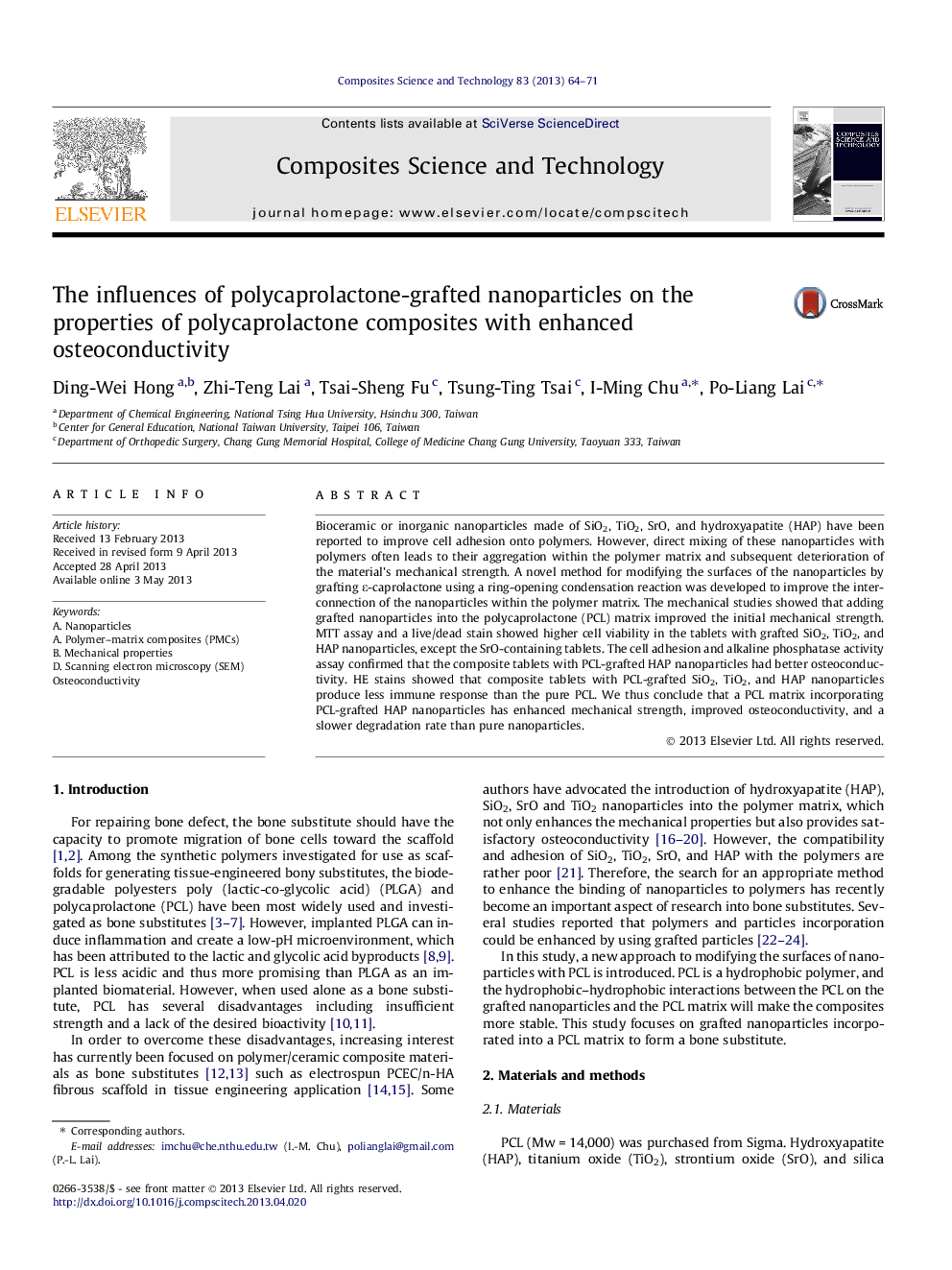| کد مقاله | کد نشریه | سال انتشار | مقاله انگلیسی | نسخه تمام متن |
|---|---|---|---|---|
| 7215975 | 1469542 | 2013 | 8 صفحه PDF | دانلود رایگان |
عنوان انگلیسی مقاله ISI
The influences of polycaprolactone-grafted nanoparticles on the properties of polycaprolactone composites with enhanced osteoconductivity
ترجمه فارسی عنوان
تأثیرات نانوذرات پلی کاپرولاکتون-پراکنده بر خواص کامپوزیت های پلیکاپرولکتون با استئوکودینامیکی افزایش یافته
دانلود مقاله + سفارش ترجمه
دانلود مقاله ISI انگلیسی
رایگان برای ایرانیان
کلمات کلیدی
موضوعات مرتبط
مهندسی و علوم پایه
سایر رشته های مهندسی
مهندسی (عمومی)
چکیده انگلیسی
Bioceramic or inorganic nanoparticles made of SiO2, TiO2, SrO, and hydroxyapatite (HAP) have been reported to improve cell adhesion onto polymers. However, direct mixing of these nanoparticles with polymers often leads to their aggregation within the polymer matrix and subsequent deterioration of the material's mechanical strength. A novel method for modifying the surfaces of the nanoparticles by grafting ε-caprolactone using a ring-opening condensation reaction was developed to improve the interconnection of the nanoparticles within the polymer matrix. The mechanical studies showed that adding grafted nanoparticles into the polycaprolactone (PCL) matrix improved the initial mechanical strength. MTT assay and a live/dead stain showed higher cell viability in the tablets with grafted SiO2, TiO2, and HAP nanoparticles, except the SrO-containing tablets. The cell adhesion and alkaline phosphatase activity assay confirmed that the composite tablets with PCL-grafted HAP nanoparticles had better osteoconductivity. HE stains showed that composite tablets with PCL-grafted SiO2, TiO2, and HAP nanoparticles produce less immune response than the pure PCL. We thus conclude that a PCL matrix incorporating PCL-grafted HAP nanoparticles has enhanced mechanical strength, improved osteoconductivity, and a slower degradation rate than pure nanoparticles.
ناشر
Database: Elsevier - ScienceDirect (ساینس دایرکت)
Journal: Composites Science and Technology - Volume 83, 28 June 2013, Pages 64-71
Journal: Composites Science and Technology - Volume 83, 28 June 2013, Pages 64-71
نویسندگان
Ding-Wei Hong, Zhi-Teng Lai, Tsai-Sheng Fu, Tsung-Ting Tsai, I-Ming Chu, Po-Liang Lai,
